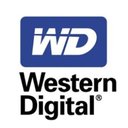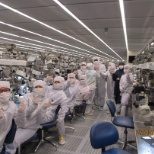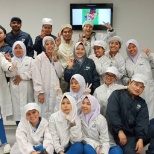Western Digital

Western Digital Headquarters Address
3355 Michelson Dr.
Ste. 100
Irvine CA, United States 92612
(view in map)
About Western Digital
When it comes to data storage, Western Digital has drive. The company is one of the largest independent makers of hard-disk drives, which record, store, and recall volumes of data. Drives for PCs account for most of Western Digital's sales, although the company also makes devices used in servers, cloud computing data centers, and home entertainment products such as set-top boxes and video game consoles. The company sells to manufacturers and through retailers and distributors. More than 60% of its sales are to OEMs such as Hewlett-Packard, which is Western Digital's largest customer. The company gets more than half of its sales from the Asia/Pacific region.
Operations
Western Digital is structured around two subsidiaries: WD Technologies and Hitachi Global Storage Technologies (HGST). Each subsidiary maintains its own brand and product lines, with separate sales, marketing, operations, and product development teams. The company is looking to offer improved customer experiences for competing and complementary brands, while finding efficiencies in shared services.
Geographic Reach
The company is seeing strong growth in Asia (which represents more than 55% of sales) and the US (nearly 20%), with slower growth in the EMEA region (another nearly 20%). Western Digital has manufacturing facilities in the US and across Asia and sales offices worldwide.
Strategy
Western Digital is one of a handful of manufacturers that dominate the hard-disk drive market -- a sector characterized by harsh competition, short product life cycles, and aggressive price cuts. In order to reduce its dependence on drives for PCs, the company has branched into branded consumer media devices, including DVR expanders, portable media drives, and media players that let users play data from external drives on TV. Its WD TV Live Plus media player streams movies (including those offered by Netflix) and Internet video to a digital TV. It is also investing in products for the mobile computing and cloud computing markets.
Another promising market for Western Digital is nearline hard drives, which are more cost effective than traditional hard drives by providing more capacity while requiring lower power. Nearline hard drives are used for stimulated applications, such as video surveillance and medical imaging, and IT infrastructure applications, including scientific computing and Web search engines.
Mergers & Acquisitions
In 2012 Western Digital bought Hitachi's disk drive business, HGST, for around $4.3 billion in cash and stock. The deal boosts Western Digital's share of the global market to nearly 50%, ahead of rival Seagate Technology which accounts for around 30% of global shipments. Strategically, the deal adds disk drives used with servers -- a large part of both Hitachi and Seagate's businesses -- and gives Western Digital a better foothold in solid-state drives used in tablets and other portable devices. The acquisition also provides Western Digital its first manufacturing foothold in China and the Philippines. With the stock portion of the sale, Hitachi gains a 10% stake in Western Digital and two spots on the board of directors.
Western Digital has long used acquisitions to add new product lines and extend its geographic reach. Over the past several years it bought the magnetic media sputtering operations of Hoya for about $233 million and entered the market for solid-state drives with the $65 million purchase of SiliconSystems. In a large 2007 acquisition, Western Digital bought disk component maker Komag for $1 billion, which gave it the ability to manufacture the media and substrates used in its drives.
Financial Analysis
Western Digital's sales have fluctuated in recent years as it has dealt with the worldwide economic downturn. However, its acquisition of HGST helped produce strong results for fiscal 2012 (ended June 30). The company's revenues grew 31% that year to $12.5 billion, with HGST contributing more than $3 billion of that. It also saw an improvement in hard drive average selling price from $45 in fiscal 2011 to $62 in fiscal 2012.
Although Western Digital saw increased R&D and SG&A expenses in 2012, the overall strength of revenues led to a 122% jump in net income (to $1.6 billion).
Operations
Western Digital is structured around two subsidiaries: WD Technologies and Hitachi Global Storage Technologies (HGST). Each subsidiary maintains its own brand and product lines, with separate sales, marketing, operations, and product development teams. The company is looking to offer improved customer experiences for competing and complementary brands, while finding efficiencies in shared services.
Geographic Reach
The company is seeing strong growth in Asia (which represents more than 55% of sales) and the US (nearly 20%), with slower growth in the EMEA region (another nearly 20%). Western Digital has manufacturing facilities in the US and across Asia and sales offices worldwide.
Strategy
Western Digital is one of a handful of manufacturers that dominate the hard-disk drive market -- a sector characterized by harsh competition, short product life cycles, and aggressive price cuts. In order to reduce its dependence on drives for PCs, the company has branched into branded consumer media devices, including DVR expanders, portable media drives, and media players that let users play data from external drives on TV. Its WD TV Live Plus media player streams movies (including those offered by Netflix) and Internet video to a digital TV. It is also investing in products for the mobile computing and cloud computing markets.
Another promising market for Western Digital is nearline hard drives, which are more cost effective than traditional hard drives by providing more capacity while requiring lower power. Nearline hard drives are used for stimulated applications, such as video surveillance and medical imaging, and IT infrastructure applications, including scientific computing and Web search engines.
Mergers & Acquisitions
In 2012 Western Digital bought Hitachi's disk drive business, HGST, for around $4.3 billion in cash and stock. The deal boosts Western Digital's share of the global market to nearly 50%, ahead of rival Seagate Technology which accounts for around 30% of global shipments. Strategically, the deal adds disk drives used with servers -- a large part of both Hitachi and Seagate's businesses -- and gives Western Digital a better foothold in solid-state drives used in tablets and other portable devices. The acquisition also provides Western Digital its first manufacturing foothold in China and the Philippines. With the stock portion of the sale, Hitachi gains a 10% stake in Western Digital and two spots on the board of directors.
Western Digital has long used acquisitions to add new product lines and extend its geographic reach. Over the past several years it bought the magnetic media sputtering operations of Hoya for about $233 million and entered the market for solid-state drives with the $65 million purchase of SiliconSystems. In a large 2007 acquisition, Western Digital bought disk component maker Komag for $1 billion, which gave it the ability to manufacture the media and substrates used in its drives.
Financial Analysis
Western Digital's sales have fluctuated in recent years as it has dealt with the worldwide economic downturn. However, its acquisition of HGST helped produce strong results for fiscal 2012 (ended June 30). The company's revenues grew 31% that year to $12.5 billion, with HGST contributing more than $3 billion of that. It also saw an improvement in hard drive average selling price from $45 in fiscal 2011 to $62 in fiscal 2012.
Although Western Digital saw increased R&D and SG&A expenses in 2012, the overall strength of revenues led to a 122% jump in net income (to $1.6 billion).
Number of Employees in Western Digital
10,000+
Western Digital Revenue
more than $10B (USD)
Industry
Links




